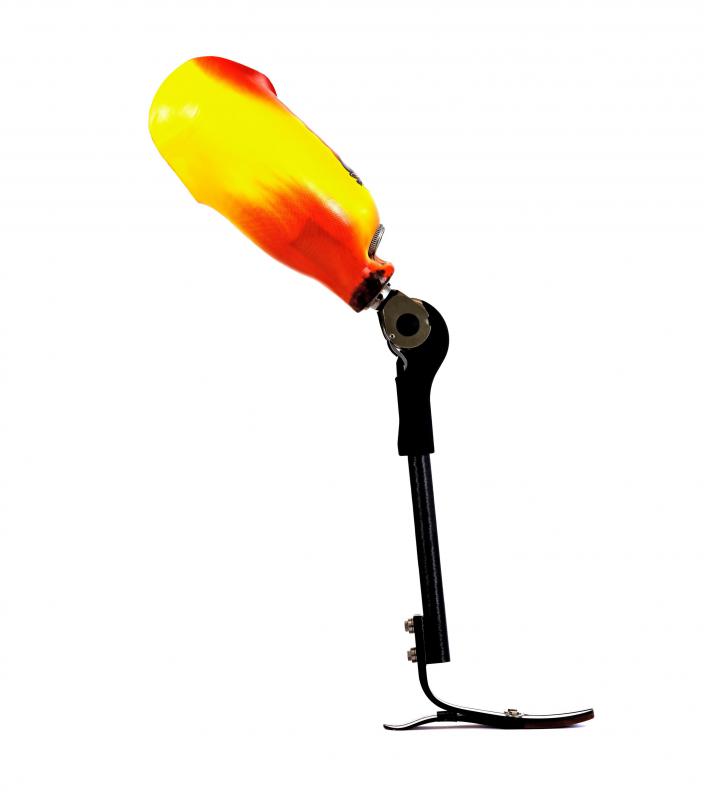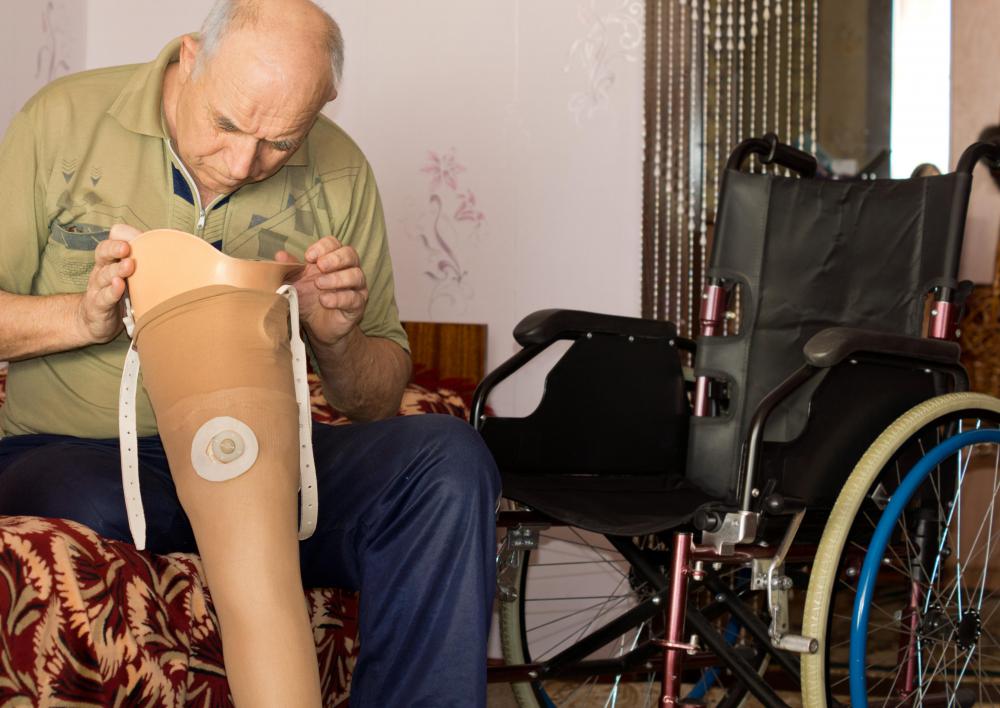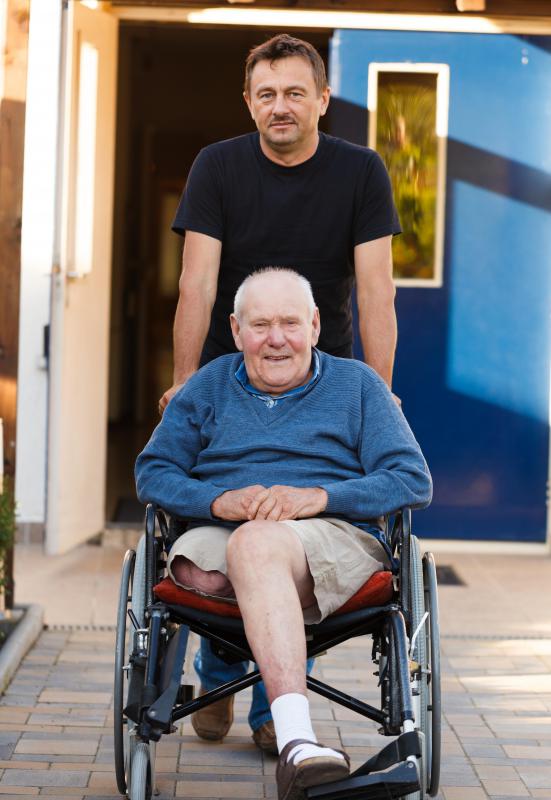At TheHealthBoard, we're committed to delivering accurate, trustworthy information. Our expert-authored content is rigorously fact-checked and sourced from credible authorities. Discover how we uphold the highest standards in providing you with reliable knowledge.
What are Prosthetics?
Prosthetics, also known as prostheses, are artificial body parts which are used to replace body parts which have been lost due to disease, injury, or birth defect. Prosthetic replacements for a wide assortment of body parts are available, from artificial legs to glass eyes, and the functionality of a prosthesis can vary. In some cases, the replacement may be purely aesthetic, while in other instances, it may help restore functionality, as in the case of a prosthetic limb which is equipped with biosensors, allowing the wearer to manipulate the limb.
The use of prosthetics is ancient. Egyptian tombs show evidence of the use of prosthetic body parts for people with disabilities, as in the case of a wooden toe which allowed someone to balance properly after losing his or her big toe. As fans of pirate fiction know, sailors replaced missing legs with wooden peg legs, and missing hands with hooks which could be used to grasp objects for basic tasks. In addition to sailors, loggers and mill workers also wore prosthetics, reflecting their dangerous working environments.

In the 20th century, major developments began to emerge in the world of prosthetics. The leaps and bounds in the world of artificial limbs were due in no small part to the numerous wars fought in the 20th century. Injured veterans wanted replacements for lost legs and arms, and the military began to meet the need, developing prosthetics which could allow people to perform complex tasks which would not have been possible with the crude prosthetics used prior to the 20th century. Modern prosthetics are so advanced that they have been used by Olympic-level athletes in competition.

The need for prosthetics in military veterans led to a push for prosthetic limbs with biosensors, sensors which actually tap into the user's body. Signals sent to the muscles or nerves are interpreted by the biosensor, allowing the wearer to flex the limb and perform other tasks, usually after training for weeks or months with the artificial limb. Many modern prosthetics also include mechanical sensors which respond to environmental changes, as for instance the change in pressure when someone climbs stairs on a prosthetic leg.

Prosthetic replacements for feet, legs, arms, and hands are all available, along with prosthetic eyes, breasts, and noses for cosmetic purposes. Typically, someone begins the process of being fitted for a prosthesis when the site of amputation has totally healed. It may take several tries to find a limb which fits and feels comfortable, and training is required to show the patient how to use the limb properly and how to wear it. In the case of people born with congenital defects, a prosthesis can be fitted at any time, although replacements will be needed as the wearer grows.
AS FEATURED ON:
AS FEATURED ON:
















Discussion Comments
I would like to know why we make such ugly prostheses when we could make limbs with silicons that are close to reality? Think a designer like the Alita movie genre. With all the technology and 3d printers we can do great things. Why do we create such artificial things?
Testes too, there are such things as prosthetic testicles, even for dogs!
Are there places in the US that take donations of prosthesis? ucxt
Post your comments